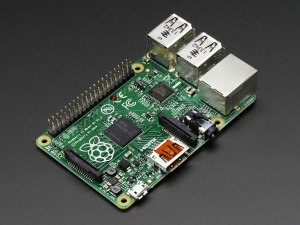
I spent some time today working with the latest Raspbian, tweaking it to work with my Apple keyboard.
Just as with Arch Linux (see “tweaking arch on the pi” from February) I had to fix the function keys, i.e. make them functional. Before that could happen, I had to fix the key mappings on the Apple keyboard by running ‘sudo dpkg-reconfigure keyboard-configuration’ and selecting English(US) mappings. For whatever reason they’re set for English(UK). Then I had to create the file /etc/modprobe.d/hid_apple.conf and add the line ‘options hid_apple fnmode=2’. Reboot, and I had a full US English Apple keyboard with working function keys.
One feature I fully appreciated in Raspian is its ability to set the time from the network, once the networking was properly configured. I got the wireless network running through the Lxde desktop and the graphical network utility. Once I had the wireless network connection set up, all further reboots set the time on the board. The board doesn’t have a battery-backed clock. With Arch Linux it always sets to 1969 unless I run a simple script to execute ‘ntpd -q -g’ at startup, which I was forced to add myself.
Performance
Performance was a bit of a mixed bag. If I logged into the command line, Raspian seemed to execute faster and smoother than Arch Linux. But run the graphical desktop, first with LXDE and then XFCE4, and things got slower, many times annoyingly so. I did certainly appreciate the update to the Epiphany browser; it worked as well as advertised, but it also slowed considerably when it hit a site with a lot of complex features, such as this WordPress blog. I had hoped to write this update from the Raspian desktop, but I turned back to my workhorse Ubuntu system on the now-five-year-old Samsung R580 notebook to write this.
General Conclusions
Raspbian’s a good distribution for the Raspberry Pi B+, but for my tastes I think I’ll stick with Arch Linux for Arm. I had thought to try and unify all my Linux environments as much as possible around Ubuntu/Debian, but that won’t happen any time soon. My greatest concern outside of performance is drive footprint. Raspbian came out of the box consuming more drive space than Arch Linux, and I’ve been tinkering with Arch Linux since late January. When I installed Xfce, Raspbian’s overall footprint had grown to 2.7 GB, a good .5GB greater than Arch Linux, and that’s even after uninstalling Lxde from Raspbian.

You must be logged in to post a comment.